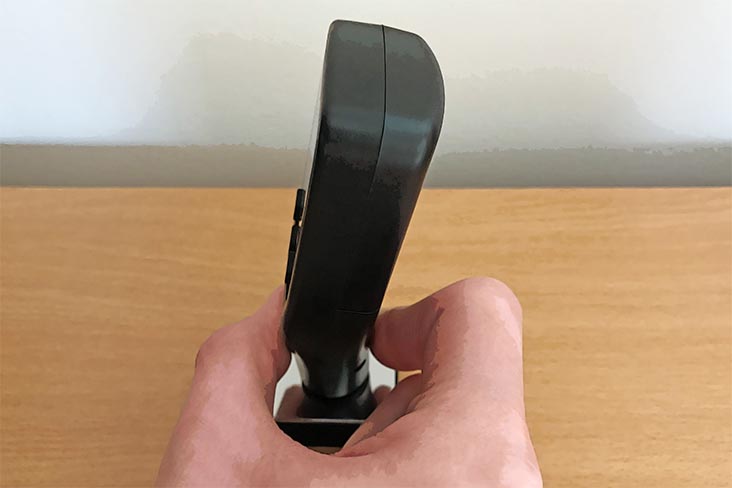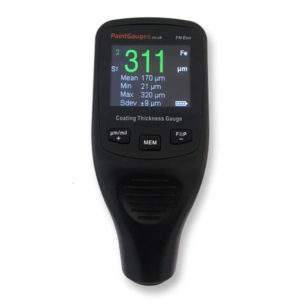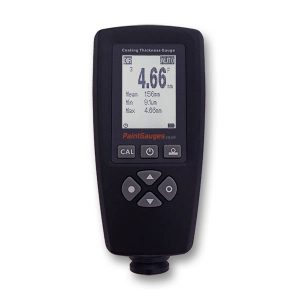Our coating thickness gauges are high precision devices that take coating thickness measurements to 1/10,000 of a millimetre (display resolution of 0.1 micrometres). They are simple and quick to use. However, to ensure accurate and consistent readings the gauges should to be handled in a stable, consistent, and appropriate way.
On this page are some guidelines to guide in the appropriate way to hold these handheld devices when taking readings, to assist users in taking measurements.
Users who are unfailiar with using these devices are recommended to observe the guidelines below, and practice taking readings on test blocks and shims. The objective is to become proficient to the extent that reading to reading consistency is within tolerances.
The gauge probe must be held flat against the coating
The plastic surround of the gauge probe must be held flat and stable against the coating surface when a reading is being taken. If the probe is slightly angled off the surface, the reading will not be accurate and due to the unrepeatability of such an unstable positioning those inaccurate readings are also likely to be inconsistent.
This can be achieved by imagining “pulling” the gauge down onto the coating surface, rather than “pushing” it down onto the coating surface. I.e. rather than having your hand near its top, have your hand near its base, closer to the sensor.
Note that some models (such as the FN Pro, FN Plus, FN Evo) have a curved gauge body. This means that when the probe is flat the coating surface, the gauge body is tilted back and is not upright. This is designed to ease reading of the display. Other models (such as the 156 USB and FN Max have a straight body).
To assist with this:
- Do not hold the gauge in a fist grip.
- Hold it with a pinch grip, using thumb and forefinger.
- Hold the gauge near its base (many gauges have ridged finger grips indicating the appropriate position).
- Do not hold the gauge near its top.

The gauge probe must be held stable
The gauge must be held still and stable while a reading is being taken. An unsteady or shaky hand, or moving the gauge prior to the measurement being confirmed (typically with a beep from the gauge) will lead to inaccurate readings.
To assist with this:
- Place the side of your palm that is holding the gauge against the surface to be measured.
- Do not hold the gauge excessively tightly and do not push it down excessively hard against the surface.
- Reading consistency and accuracy can be assisted by carefully placing the probe when taking each measurement, rather than rapidly moving from spot to spot.
-
 FN Evo Coating Thickness Gauge£199.99
FN Evo Coating Thickness Gauge£199.99 -
 FN Max Coating Thickness Gauge£329.99
FN Max Coating Thickness Gauge£329.99
